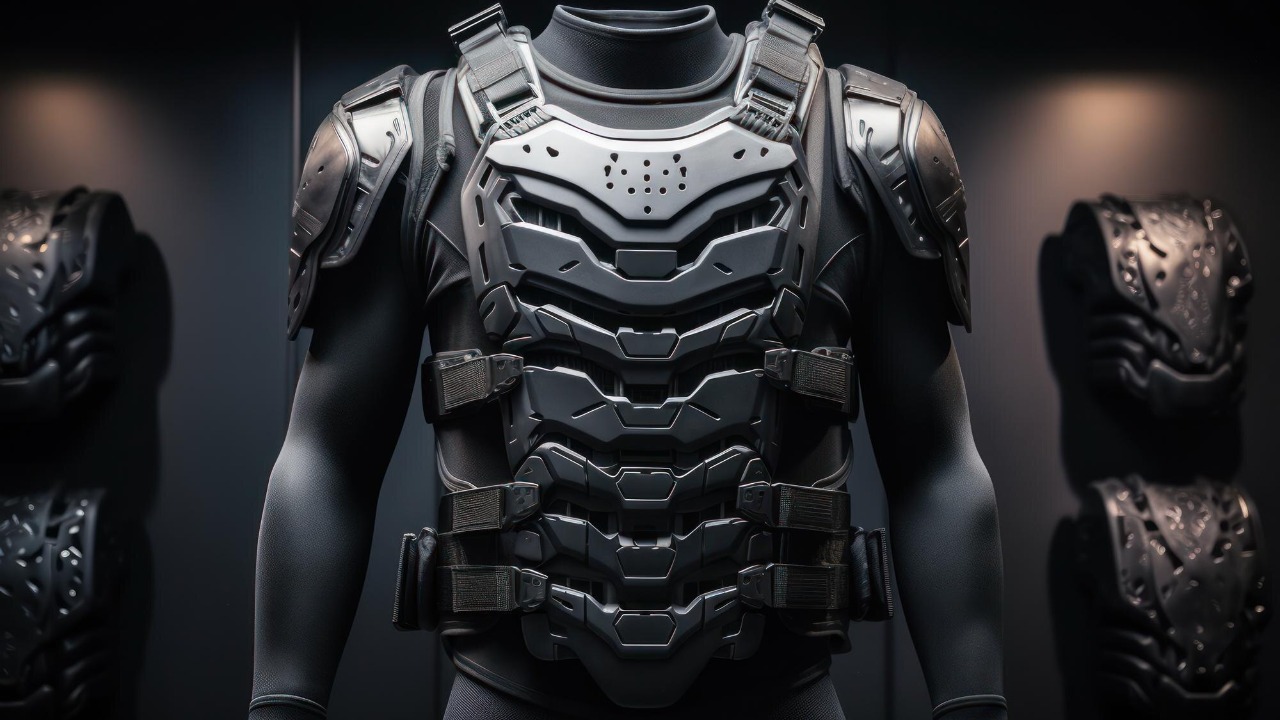
Armor has been a crucial aspect of human civilization, evolving from basic leather shields to intricate metal suits. However, with technological advancements, the future of armor may no longer rely on traditional materials like metal. The innovative world of nonmetal chainmail offers promising alternatives, examining its potential uses and benefits in modern applications.
The Evolution of Armor

The historical journey of armor is a testament to human ingenuity and the relentless pursuit of protection. From the earliest leather shields used by ancient warriors to the intricate metal chainmail that defined medieval battlefields, armor has continuously evolved to meet the demands of warfare. Leather, while flexible and lightweight, offered limited protection against swords and arrows. This led to the advent of metal armor, which provided greater defense but came with its own set of challenges such as weight and limited mobility.
Metal armor, particularly chainmail, became synonymous with knightly valor, yet it was not without limitations. The heavy weight restricted movement and endurance, and the metal links required constant maintenance to prevent rust and damage. The transition from leather to metal represented a significant leap in protective gear, but it also underscored the ongoing struggle to balance protection with practicality.
The role of technology in armor development cannot be overstated. As technological advancements continue to shape the battlefield, they have equally influenced armor design. The integration of new materials and smart technologies has paved the way for innovations that were once the realm of science fiction. Modern armor now incorporates advanced composites, sensors, and even temperature-regulating materials to enhance functionality and comfort. This fusion of technology and protection marks a new era in armor design, one that prioritizes adaptability and resilience.
Innovative Materials Replacing Metal

Synthetic polymers are emerging as the new standard in armor materials, offering a unique combination of strength, flexibility, and lightweight properties. Unlike traditional metals, these polymers can be engineered to provide tailored protection against specific threats, such as ballistic impacts or sharp objects. For instance, materials like Kevlar and Dyneema have already demonstrated their effectiveness in bulletproof vests and protective gear. The success of these materials in real-world applications underscores their potential to redefine what armor can achieve.
Bioengineered solutions are also making waves in the field of armor development. By drawing inspiration from nature, scientists are creating materials that mimic the structural properties of biological entities. This approach, known as biomimicry, has led to advancements such as armor that replicates the flexibility and strength of spider silk or the protective qualities of a mollusk shell. These nature-inspired designs offer exciting possibilities for creating armor that is both lightweight and exceptionally strong, challenging the conventional reliance on metal.
Advantages of Nonmetal Chainmail

One of the most significant advantages of nonmetal chainmail is its lightweight and flexible design. Traditional metal armor, while protective, often compromised the wearer’s mobility and comfort. In contrast, nonmetal materials can be engineered to provide superior flexibility without sacrificing protection. This ergonomic benefit is particularly valuable in scenarios where agility and speed are crucial, such as in military operations or sports. The increased mobility afforded by nonmetal chainmail can enhance performance and reduce fatigue, making it an attractive option for various applications.
Beyond mobility, nonmetal chainmail offers enhanced protective features that rival those of metal armor. These advanced materials are capable of absorbing impact more effectively, distributing the force across a wider area to minimize injury. Additionally, nonmetal armor can incorporate thermal resistance properties, providing protection against extreme temperatures and reducing the risk of burns. These features make nonmetal chainmail not only a viable alternative to traditional armor but also a superior choice in many respects.
Potential Applications Beyond Traditional Use

The potential applications of nonmetal chainmail extend far beyond traditional military and law enforcement uses. In modern-day military and police gear, nonmetal armor can address current challenges such as weight, flexibility, and maintenance. By providing a lightweight and durable alternative, nonmetal chainmail can enhance the effectiveness of personnel in the field, improving their ability to respond to dynamic situations.
In civilian and commercial sectors, the applications of nonmetal armor are equally promising. In sports, for instance, players require protective gear that does not impede their performance. Nonmetal chainmail offers the perfect solution, providing protection without compromising agility and speed. Similarly, in industrial settings, workers can benefit from the enhanced safety features of nonmetal armor, which can reduce the risk of injury from falls or impacts. Current trends indicate a growing interest in these non-traditional applications, with experimental uses already underway in various industries.
Challenges and Future Prospects

Despite the many advantages of nonmetal armor, there are barriers to its widespread adoption. Economic and technical challenges remain significant hurdles, as the transition from traditional materials to advanced polymers and bioengineered solutions requires substantial investment and research. Additionally, cultural and institutional resistance to change can slow the adoption process, as organizations may be hesitant to replace familiar, time-tested materials with new technologies.
Looking ahead, the future of armor technology is poised for exciting advancements and innovations. As research continues to push the boundaries of material science, we can expect to see the development of even more sophisticated armor solutions. These future advancements have the potential to redefine personal and public safety, offering protection that is both effective and adaptable to a wide range of environments. The ongoing evolution of armor technology promises a future where safety and functionality coexist seamlessly, paving the way for a new era of protection.